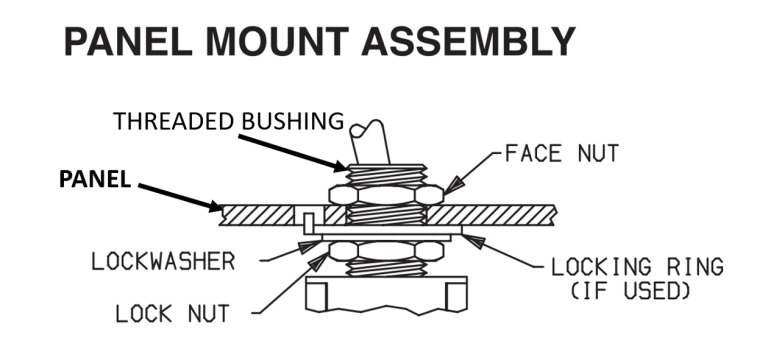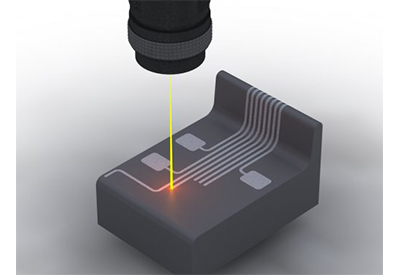CIOS of U.S. Connected Cities Share Tips to “Get Smart”

January 6, 2021
IBM, which trademarked “smarter cities” in 2014, outlined its vision of the term in a 2009 executive report: cities should be imagined as a “system of systems” providing an integrated web of services, from transportation to education. Noting that “in 2008, for the first time in human history, the majority of the world’s people lived in cities,” IBM proposed a new, utopian model of urban management that would use technology to monitor and optimize these systems.
Over the next decade, cities around the world took steps to make this “smart” vision a reality.
IBM’s report foreshadows the challenges they have faced, describing the process in a somewhat contradictory way as an incremental revolution.
“Becoming a ‘smarter city’ is a journey … not an overnight transformation. Cities must prepare for change that will be revolutionary, rather than evolutionary, as they put in place next-generation systems that work in entirely new ways.”
While technology companies praise disruption, municipalities try to avoid it. In this context, the term calls to mind a stalled bus route or a burst water pipe – an interruption of the services citizens depend on.
How can cities integrate transformative technologies into existing processes and infrastructure while minimizing friction for the citizens they serve? How can they lay the groundwork for data collection and analysis, knowing technology and use cases are always evolving?
During a recent panel hosted by Graybar and think tank Dense Networks, CIOs of nationally recognized connected cities emphasized that there is no one right answer for “smart.” Instead, they described collaborative processes where public and private stakeholders implement technologies according to the needs and resources of their cities.
Cary, North Carolina, which received a 2018 Readiness Challenge Grant from the Smart Cities Council, began its journey towards “smart” five years ago. The city’s CIO, Nicole Raimundo, acknowledges some skepticism towards the term as she speaks to her fellow panelists.
“We started down the path of trying to figure out what the buzzword of ‘smart cities’ – I know we all are not a fan of that term – what it means, knowing that it was something we were going to need to prepare for in the near future.”
Half a decade into Cary’s smart city journey, Raimundo offers a dynamic vision: “We think about it in terms of utilizing technology and data to optimize city functions – how do we [promote] economic growth and improve quality of life for our citizens.”
Cary, NC Gets Smarter Through Collaboration
To imagine a “smarter” Cary, Raimundo drew on the wealth of tech expertise in her city’s backyard.
The Town of Cary is located just outside North Carolina’s Research Triangle, and houses the world headquarters of leading analytics company SAS Institute.
Ranked as one of the top five “best places to live” in the U.S., Cary’s population nearly tripled in size from 1990 to 2017. Today, 61% of residents have a bachelor’s degree, and 98% have high-speed internet access through fiber.
When Raimundo sought out solutions expertise from neighboring tech companies, they were eager to use Cary as a test case.
“Four years ago seems like it wasn’t that long ago, and it wasn’t – but in terms of the technology trajectory in the IoT space, it was in its infancy. A lot of these major companies were also just trying to figure it out. It was this great partnership where we were learning together,” she says.
Cary worked with vendors to turn its town hall campus into a simulated smart city, treating it as a microcosm of the town. One of the first pilot programs put occupancy sensors underneath parking spots to track availability. In-ground sensors would be too difficult to install at scale, they learned; a camera system was a better solution.
The campus became a “living lab” of IoT test cases, exploring ways to optimize everything from lighting to facilities usage. Bayer Crop Science even partnered with a local pest control company to test smart rat traps.
“The point was the learning,” Raimundo says.
They quickly discovered that managing siloed applications strained staff resources and limited visibility into operations. Moving forward, Cary would use vendors with open APIs and comprehensive dashboards.
“What we learned is that we needed a platform strategy where we could share data,” she says. “Smart cities are nothing without data.”
As in many municipalities, “information silos” had formed across departments, supported by vendors offering independent workflows. The city put together an internal staff committee to inventory applications and foster collaboration, guided by a new philosophy of “one Cary.”
“When you get everyone in the room and you’ve got representation from all the departments, you start to share pain points,” she says. “A lot of times you don’t know what you don’t know, or you just never question what you do.”
Raimundo’s team spent years piloting programs on their own campus before deploying solutions in Cary at large.
“Building that framework, and the time it took, has put us in a place where we can deliver really quickly,” she says.
Starting in 2019, they worked with Microsoft and SAS to develop a proactive solution to manage stormwater throughout the town. Cary is prone to flooding, and in the past, the public works department relied on phone calls from citizens to direct emergency services and close roads. Earlier this year, the town installed water level sensors and rain gauges that feed information into an integrated dashboard. Officials can now view flood events in real time, dispatch resources and alert at-risk citizens and downstream municipalities.
“We’re still connecting some of the dots, but we’re already seeing real benefits in the automation of formerly manual processes,” Raimundo says.
Las Vegas, NV Bets on Better Data to Improve Park Safety
Las Vegas, Nevada is currently running about 50 programs to bring in technologies from broadband to autonomous drones – but Michael Sherwood, the city’s CIO, wouldn’t describe any of them as “smart city” projects.
“I call them technology initiatives. It’s really not about being smart, it’s about being efficient.”
Sherwood focuses on quantifiable data and measurable results. By tracking problem streets and installing new traffic markers, he points out, the city has reduced wrong-way driving by 40%.
A little less than a year ago, Sherwood’s team decided to focus on a well-loved but poorly understood asset – its public parks.
“We expend a lot of funding on maintaining and keeping parks going,” says Sherwood. “[But] no-one knows how many people go to the parks, or what they do at the parks.”
They started by collecting data. How many people were using the basketball courts? What about the soccer fields? With 90 parks spread throughout the city, how much time did police spend driving between them on patrol?
“We started looking at, how can we reimagine the park? How can we not only make it an asset for the community, but make it so it has additional capabilities that it didn’t have before?”
At this point in the panel, Sherwood flips to the next slide in his presentation: a photo of a new downtown park that is popular as a selfie spot, lit by a desert sunset. A sign spells out “Las Vegas” in looping, twelve-foot-tall letters colored a neon pink that stands out against the orange sky. Cartoonishly large poker chips are stacked into statues nearby.
Visitors often risk climbing the sign to get a better photo. It is now programmed to play an automated warning when someone steps on, and tracks how often people try.
Located between two bustling main streets, the park is at the heart of a high-traffic zone. The city installed cameras to monitor crowd volume, and look for activity when the park is closed. Mindful of privacy concerns, Sherwood explains that they don’t capture any personally identifiable information (PII). Instead, they use infrared technology to detect the presence of bodies without facial recognition. The video is watched by an AI, and footage is deleted after a day.
Audio sensors throughout the park listen for signs of trouble. They can detect and distinguish vehicle glass breaking, gunshots and more, dispatching security based on probable cause to cut down on time spent patrolling at random.
“Everything we’re doing is based on actionable data,” Sherwood says.
Building the Infrastructure for an Evolving Smart City
A city becomes “smart” by collecting, sharing and analyzing data about its day-to-day operations. Layers of infrastructure make this possible: city-wide IoT systems of sensors and controls connected by communications networks, sending data to integrated platforms.
Municipal leaders can start deploying these new technologies by evolving their existing infrastructure.
Right now, many cities are building out 4G and 5G cellular networks, which require dense deployments of new equipment. Since vertical real estate in the public right of way is in short supply, most are leveraging their existing network of street poles.
Lighting manufacturer Signify has developed all-in-one “smart poles” that support lighting, telecommunications and IoT applications. As cities are building out the latest generation of cellular networks, they can take this opportunity to prepare their infrastructure for the future.
“[We’re] changing [street poles] from a liability into a true asset,” says Bill McShane, who serves as General Manager, Connected City Experience at Signify. “The idea is to blend smart infrastructure into the community to deliver the services that the smart cities of the future want.”
In the future, the “smartest” cities will be the ones that use technology for the good of their citizens. As technologies and applications continue to evolve, collaborations between private solutions providers, municipal leaders and community members will ensure sustainable progress.
Graybar is in a unique position to help cities prepare their infrastructure for these possibilities. With access to a wide variety of communications, electrical and smart pole technologies, along with the Omnia Partners public contract – which streamlines the municipal procurement process – Graybar can help cities evolve to collect actionable data and become more responsive to day-to-day needs.
![]()
https://www.graybar.com/cios-of-us-connected-cities-share-tips-to-get-smart
Register for future events Here











